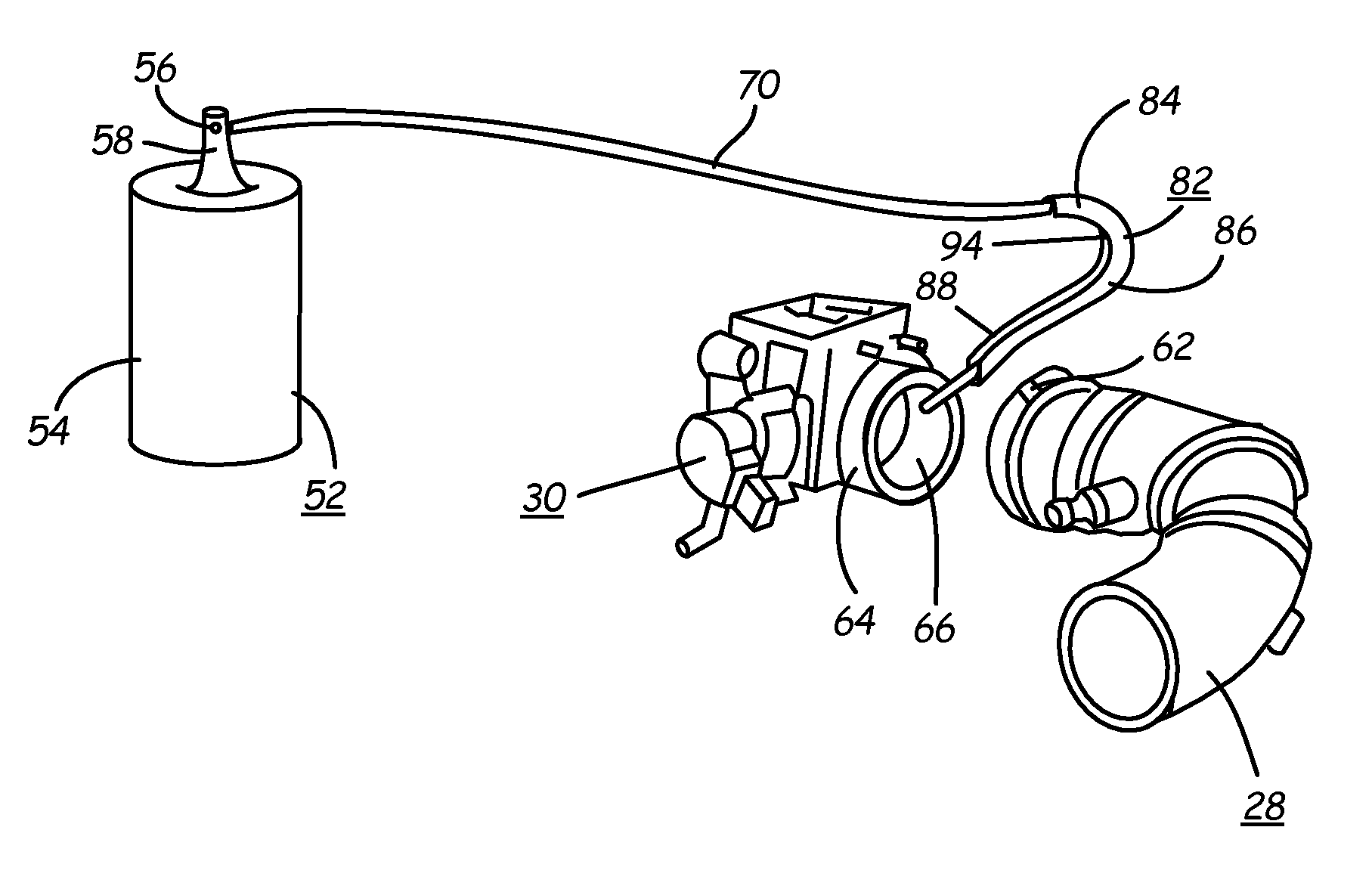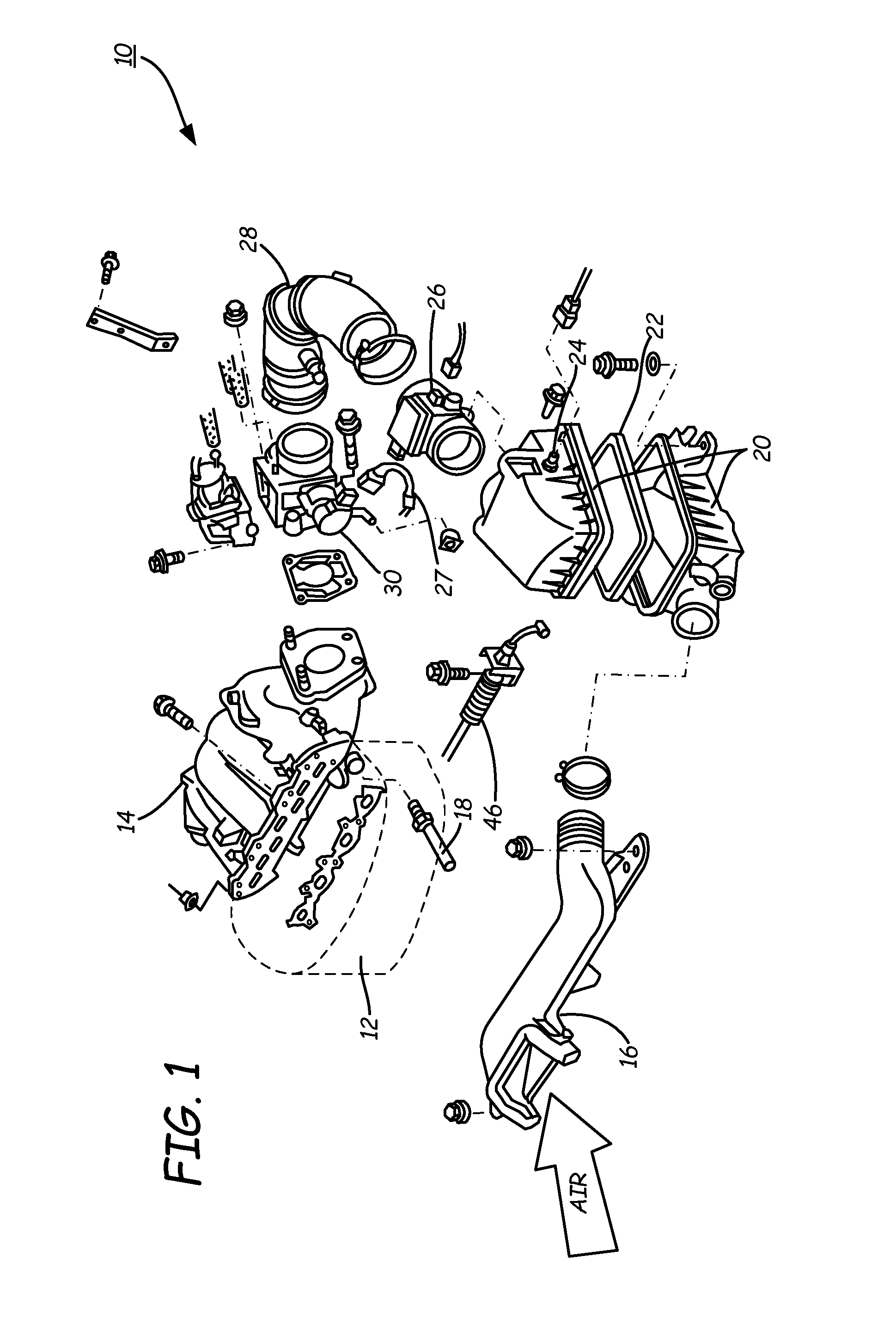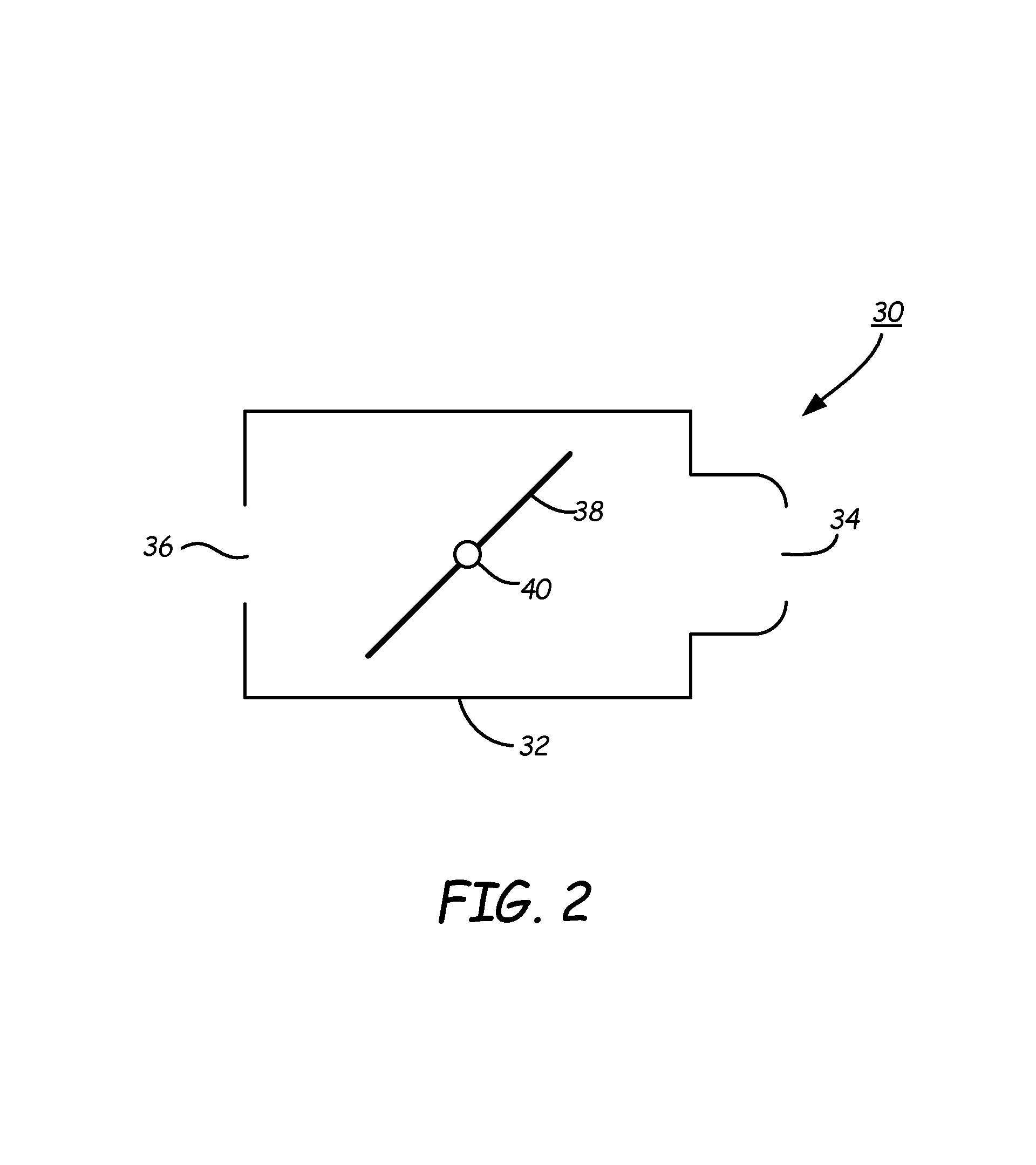Directional conduit guide support
a guide support and conduit technology, applied in the direction of valve housing, hose connection, cleaning using liquids, etc., can solve the problems of affecting the smooth operation of the engine, the idling of the engine, and the accumulation of dirt and residues in the nozzle, so as to achieve the effect of simple, efficient, reliable and cost-effectiv
- Summary
- Abstract
- Description
- Claims
- Application Information
AI Technical Summary
Benefits of technology
Problems solved by technology
Method used
Image
Examples
Embodiment Construction
[0022]A delivery system for providing an atomized treatment agent to a specific internal location of a closed mechanical system like an internal combustion engine is provided by the invention. Such invention comprises a container for holding the atomized treatment agent under pressure as an aerosol or under compressed air, so that the atomized treatment agent is ejected in atomized form. The atomized treatment agent is delivered via a flexible, non-rigid conduit to the desired internal location inside the closed mechanical system. The free end of the conduit is inserted a predetermined distance into the closed mechanical system between, e.g., the ID / OD coupling joint between an air inlet hose and the cooperating inlet port collar of the mechanical part whose interior needs to be treated. The vacuum condition prevailing within the mechanical system will draw the atomized treatment agent into the internal mechanical system part, such as the fuel injectors, intake manifold, engine cyli...
PUM
| Property | Measurement | Unit |
|---|---|---|
| flexible | aaaaa | aaaaa |
| length | aaaaa | aaaaa |
| mechanical energy | aaaaa | aaaaa |
Abstract
Description
Claims
Application Information
 Login to View More
Login to View More - R&D
- Intellectual Property
- Life Sciences
- Materials
- Tech Scout
- Unparalleled Data Quality
- Higher Quality Content
- 60% Fewer Hallucinations
Browse by: Latest US Patents, China's latest patents, Technical Efficacy Thesaurus, Application Domain, Technology Topic, Popular Technical Reports.
© 2025 PatSnap. All rights reserved.Legal|Privacy policy|Modern Slavery Act Transparency Statement|Sitemap|About US| Contact US: help@patsnap.com



